Multi-Objective Optimization of Energy Storage Station Configuration in Power Grids Considering the Flexibility of Thermal Load Control
Abstract
1. Introduction
2. Operational Framework for ESS in the Power Grid
3. Power Grid and ESS Model
3.1. Power Grid Model
- Cost of purchasing electricitywhere is the electricity purchase price in period t; is the power transfer between the grid and the system in period t; is the length of the scheduling interval.
- Power generation costswhere is the set of micro-gas turbine units for any micro-gas turbine i in the set ; and are the unit fuel operation and maintenance costs, respectively; is the power generated; is the conversion efficiency.
- Network loss costswhere represents the total number of nodes; , represent the voltage amplitude of nodes j and k at time t, respectively; represents the conductance between nodes j and k; and represents the phase angle difference of the voltages of nodes j and k.
- Load costwhere is the conventional electrical load.
3.2. ESS Model
- Acquisition costs
- 2.
- Installation costs
- 3.
- Operation and maintenance (O&M) costs
- 4.
- Equipment residual value recovery
3.3. Constraints
- Grid node voltage and line current constraintswhere , are the upper and lower limit values of the node voltage, respectively; indicates the maximum current carrying capacity of the line between node i and node j.
- Power balance constraintswhere , , , are the grid power, energy storage system, photovoltaic, wind power grid power, respectively; , are the system load power and system active loss, respectively.
- Grid tributary current constraintswhere and are the squares of the voltage magnitudes at nodes m and n, respectively; is the square of the current magnitude of line mn; and are the resistance and reactance of line mn, respectively; l is a sub-node of node n. and denote the active power injected into the sides of nodes m and n, respectively; and denote the reactive power injected into the sides of nodes m and n, respectively.
- Energy storage battery (ESB) capacity and energy multiplier constraintswhere β is the energy multiplier of the ESB; , are the upper and lower limits of the rated capacity of the ESB, respectively; , are the upper and lower limits of the charging and discharging power of the ESB, respectively.
- ESB charge state constraintswhere , ,, represent the depth of charge and discharge and the upper and lower power limits of the ESB, respectively.;, are the charging state of the ESB at the beginning and the end of the operating cycle, respectively.
- Voltage offset constraintswhere is the voltage offset during grid operation; N is the number of load nodes; T is the time period; and are the voltage of the ith node and the reference voltage at time t, respectively; is the maximum permissible deviation of the voltage of the ith node; is the maximum permissible voltage offset during grid operation.
4. Multi-Objective Optimization Strategy for Grid Energy Storage Stations Taking into Account Temperature-Controlled Load Flexibility
5. POA-GWO-CSO Algorithm
- Pelican optimization algorithm
- 2.
- Gray wolf optimization algorithm
- 3.
- Crisscross optimization algorithm
6. Analysis of the Calculations
6.1. Basic Data
6.2. Example Analysis
- (1)
- Scenario 1: No energy storage station is configured and temperature-controlled load flexibility is not considered.
- (2)
- Scenario 2: Configuration of energy storage station without considering temperature-controlled load flexibility.
- (3)
- Scenario 3: Configuration of energy storage station and consideration of temperature-controlled load flexibility.
7. Conclusions
- (1)
- This paper incorporated the energy storage station into the grid model, which not only guarantee the balanced operation of the grid, but also enhances the consumption of RE. At the same time, it fully exploits the flexibility of temperature-controlled loads and integrates them into the grid storage power station model, which reduces the cost of electricity on the basis of guaranteeing the comfort of the indoor environment.
- (2)
- The multi-objective optimization strategy for the grid ESS proposed in this paper not only improved the utilization efficiency of energy storage resources and enhanced the overall benefits of the system, but also obtained the scheme that minimized the operating costs of the grid and the configuration costs of the ESS. The results indicate that compared with Scenarios 1 and 2, the operating costs in Scenario 3 were reduced by 33.6% and 2.35%, respectively. Furthermore, the revenue of the energy storage station in Scenario 3 was 7.6% higher than that in Scenario 2.
- (3)
- The POA-GWO-CSO algorithm employed in this paper efficiently solved the multi-objective optimization problem of grid energy storage, thereby enhancing the optimization and allocation efficiency of the energy storage system while reducing the decision-making time.
Author Contributions
Funding
Data Availability Statement
Conflicts of Interest
Abbreviations
| ESS | Energy storage station |
| ESB | Energy storage battery |
| RE | Renewable energy |
| SOCP | Second-order cone programming |
| SOCR | Second-order cone relaxation |
| O&M | Operation and maintenance |
| POA | Pelican optimization algorithm |
| GWO | Grey wolf optimization algorithm |
| CSO | Crisscross optimization algorithm |
References
- Li, J.; Fang, Z.; Wang, Q.; Zhang, M.; Li, Y.; Zhang, W. Optimal Operation with Dynamic Partitioning Strategy for Centralized Shared Energy Storage Station with Integration of Large-scale RE. J. Mod. Power Syst. Clean Energy 2024, 12, 359–370. [Google Scholar] [CrossRef]
- Abomazid, A.M.; El-Taweel, N.A.; Farag, H.E.Z. Optimal Energy Management of Hydrogen Energy Facility Using Integrated Battery Energy Storage and Solar Photovoltaic Systems. IEEE Trans. Sustain. Energy 2022, 13, 1457–1468. [Google Scholar] [CrossRef]
- Hou, H.; Chen, Y.; Liu, P.; Xie, C.; Huang, L.; Zhang, R.; Zhang, Q. Multisource Energy Storage System Optimal Dispatch Among Electricity Hydrogen and Heat Networks from the Energy Storage Operator Prospect. IEEE Trans. Ind. Appl. 2021, 58, 2825–2835. [Google Scholar] [CrossRef]
- Hossain, M.B.; Islam, M.R.; Muttaqi, K.M.; Sutanto, D.; Agalgaonkar, A.P. Component Sizing and Energy Management for a Supercapacitor and Hydrogen Storage Based Hybrid Energy Storage System to Improve Power Dispatch Scheduling of a Wind Energy System. IEEE Trans. Ind. Appl. 2024, 61, 872–883. [Google Scholar] [CrossRef]
- Zhuang, Y.; Li, Z.; Tan, Q.; Li, Y.; Wan, M. Multi-Time-Scale Resource Allocation Based on Long-Term Contracts and Real-Time Rental Business Models for Shared Energy Storage Systems. J. Mod. Power Syst. Clean Energy 2024, 12, 454–465. [Google Scholar] [CrossRef]
- Islam, M.M.; Yu, T.; Giannoccaro, G.; Mi, Y.; La Scala, M.; Rajabi, M.N.; Wang, J. Improving Reliability and Stability of the Power Systems: A Comprehensive Review on the Role of Energy Storage Systems to Enhance Flexibility. IEEE Access 2024, 12, 152738–152765. [Google Scholar] [CrossRef]
- Han, J.; Fang, Y.; Li, Y.; Du, E.; Zhang, N. Optimal Planning of Multi-Microgrid System with Shared Energy Storage Based on Capacity Leasing and Energy Sharing. IEEE Trans. Smart Grid 2024, 16, 16–31. [Google Scholar] [CrossRef]
- Kong, W.; Sun, K.; Zhao, J. Two-stage Optimal Scheduling of Community Integrated Energy System Considering Operation Sequences of Hydrogen Energy Storage Systems. J. Mod. Power Syst. Clean Energy 2025, 13, 276–288. [Google Scholar] [CrossRef]
- Guo, Z.; Wei, W.; Shahidehpour, M.; Chen, L.; Mei, S. Two-Timescale Dynamic Energy and Reserve Dispatch with Wind Power and Energy Storage. IEEE Trans. Sustain. Energy 2022, 14, 490–503. [Google Scholar] [CrossRef]
- Zhang, H.; Li, Z.; Xue, Y.; Chang, X.; Su, J.; Wang, P.; Guo, Q.; Sun, H. A stochastic bi-level optimal allocation approach of intelligent buildings considering energy storage sharing services. IEEE Trans. Consum. Electron. 2024, 70, 5142–5153. [Google Scholar] [CrossRef]
- Zhai, X.; Li, Z.; Li, Z.; Xue, Y.; Chang, X.; Su, J.; Jin, X.; Wang, P.; Sun, H. Risk-averse energy management for integrated electricity and heat systems considering building heating vertical imbalance: An asynchronous decentralized approach. Appl. Energy 2025, 383, 125271. [Google Scholar] [CrossRef]
- Lu, J.; Zheng, W.; Yu, Z.; Xu, Z.; Jiang, H.; Zeng, M. Optimizing Grid-Connected Multi-Microgrid Systems with Shared Energy Storage for Enhanced Local Energy Consumption. IEEE Access 2024, 12, 13663–13677. [Google Scholar] [CrossRef]
- Zhang, H.; Zhou, S.; Gu, W.; Zhu, C.; Chen, X.G. Optimal Operation of Micro-energy Grids Considering Shared Energy Storage Systems and Balanced Profit Allocations. CSEE J. Power Energy Syst. 2022, 9, 254–271. [Google Scholar]
- Wang, G.; Wang, C.; Feng, T.; Wang, K.; Yao, W.; Zhang, Z. Day-Ahead and Intraday Joint Optimal Dispatch in Active Distribution Network Considering Centralized and Distributed Energy Storage Coordination. IEEE Trans. Ind. Appl. 2024, 60, 4832–4842. [Google Scholar] [CrossRef]
- Qi, C.; Wang, K.; Fu, Y.; Li, G.; Han, B.; Huang, R.; Pu, T. A decentralized optimal operation of AC/DC hybrid distribution grids. IEEE Trans. Smart Grid 2017, 9, 6095–6105. [Google Scholar] [CrossRef]
- Lu, X.; Liu, Z.; Hu, J.; Xiao, C.; Feng, K.; Jin, W. Optimization method for multi-port alternating current/direct current flexible integrated energy control systems based on improved pelican optimization algorithm. Renew. Energy 2024, 42, 1697–1706. [Google Scholar]
- Gan, L.; Low, S.H. Optimal power flow in direct current networks. IEEE Trans. Power Syst. 2014, 29, 2892–2904. [Google Scholar] [CrossRef]
- Nagpal, H.; Avramidis, I.-I.; Capitanescu, F.; Madureira, A.G. Local Energy Communities in Service of Sustainability and Grid Flexibility Provision: Hierarchical Management of Shared Energy Storage. IEEE Trans. Sustain. Energy 2022, 13, 1523–1535. [Google Scholar] [CrossRef]
- Yang, W.; Song, L. A Two-Stage Investment Behavior-Based Approach for Efficient Allocation of Electrical Energy with Shared Energy Storage Station. IEEE Access 2024, 12, 105148–105164. [Google Scholar] [CrossRef]
- Yan, D.; Chen, Y. Distributed Coordination of Charging Stations with Shared Energy Storage in a Distribution Network. IEEE Trans. Smart Grid 2023, 14, 4666–4682. [Google Scholar] [CrossRef]
- Xia, S.; Cai, L.; Tong, M.; Wu, T.; Li, P.; Gao, X. Regulation Flexibility Assessment and Optimal Aggregation Strategy of Greenhouse Loads in Modern Agricultural Parks. Prot. Control Mod. Power Syst. 2024, 9, 98–111. [Google Scholar] [CrossRef]
- Wang, P.; Wu, D.; Kalsi, K. Flexibility Estimation and Control of Thermostatically Controlled Loads with Lock Time for Regulation Service. IEEE Trans. Smart Grid 2020, 11, 3221–3230. [Google Scholar] [CrossRef]
- Hao, H.; Wu, D.; Lian, J.; Yang, T. Optimal Coordination of Building Loads and Energy Storage for Power Grid and End User Services. IEEE Trans. Smart Grid 2017, 9, 4335–4345. [Google Scholar] [CrossRef]
- Chen, H.; Xiong, X.; Zhu, J.; Wang, J.; Wang, W.; He, Y. A Two-Stage Stochastic Programming Model for Resilience Enhancement of Active Distribution Networks with Mobile Energy Storage Systems. IEEE Trans. Power Deliv. 2023, 39, 2001–2014. [Google Scholar] [CrossRef]
- Bai, W.; Wang, D.; Sun, X.; Yu, J.; Xu, J.; Pan, Y. An Online Multi-Level Energy Management System for Commercial Building Microgrids with Multiple Generation and Storage Systems. IEEE Open Access J. Power Energy 2023, 10, 195–207. [Google Scholar] [CrossRef]
- Wu, S.; Li, Q.; Liu, J.; Zhou, Q.; Wang, C. Bi-level optimal configuration for combined cooling heating and power multi-microgrids based on energy storage station service. Power Syst. Technol. 2021, 45, 3822–3829. [Google Scholar]
- Wen, K.; Li, W.; Han, S.; Jin, C.; Zhao, Y. Optimization of deployment with control for battery energy storage system participating in primary frequency regulation service considering its calendar life. High Volt. Eng. 2019, 45, 2185–2193. [Google Scholar]

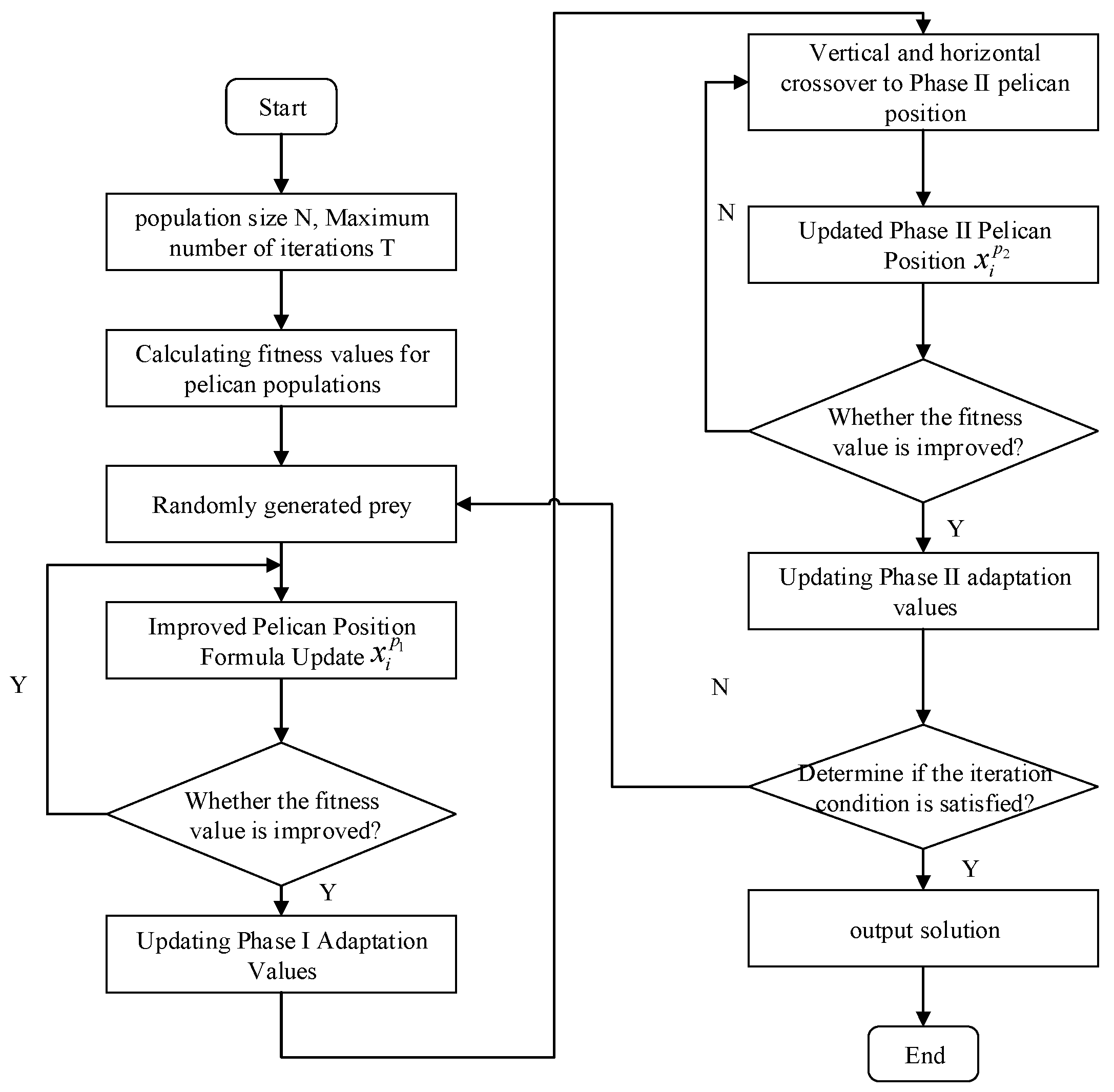
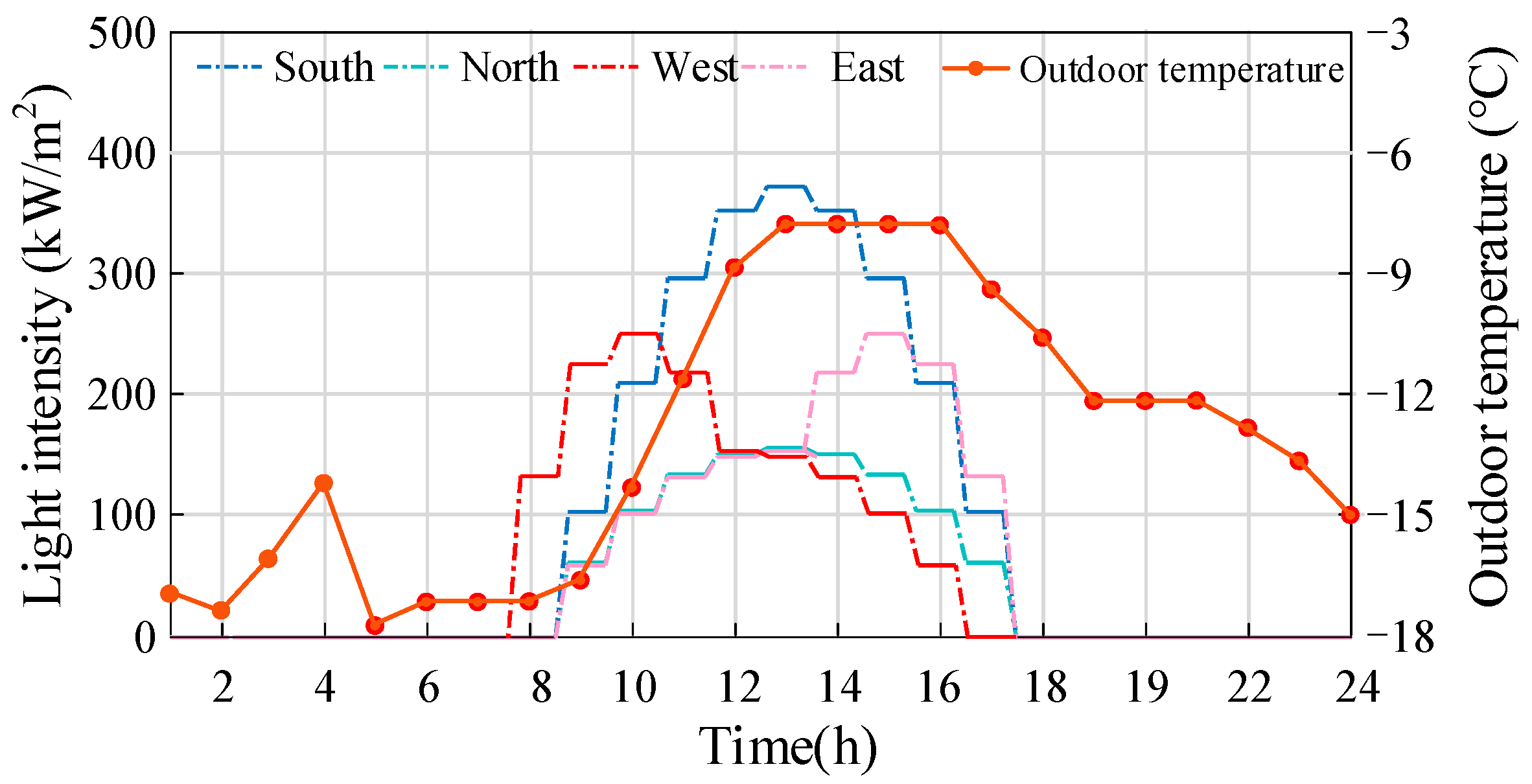
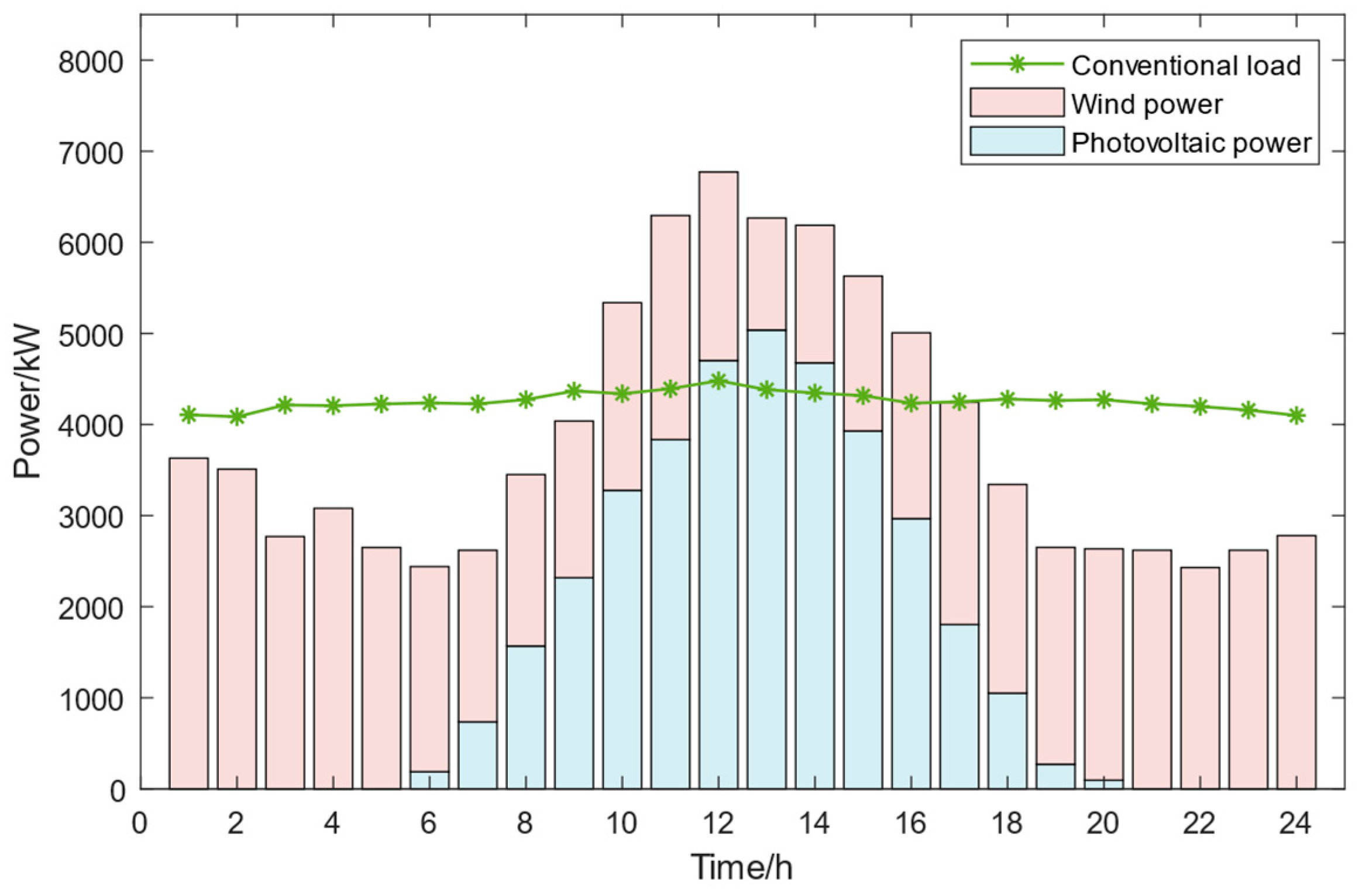
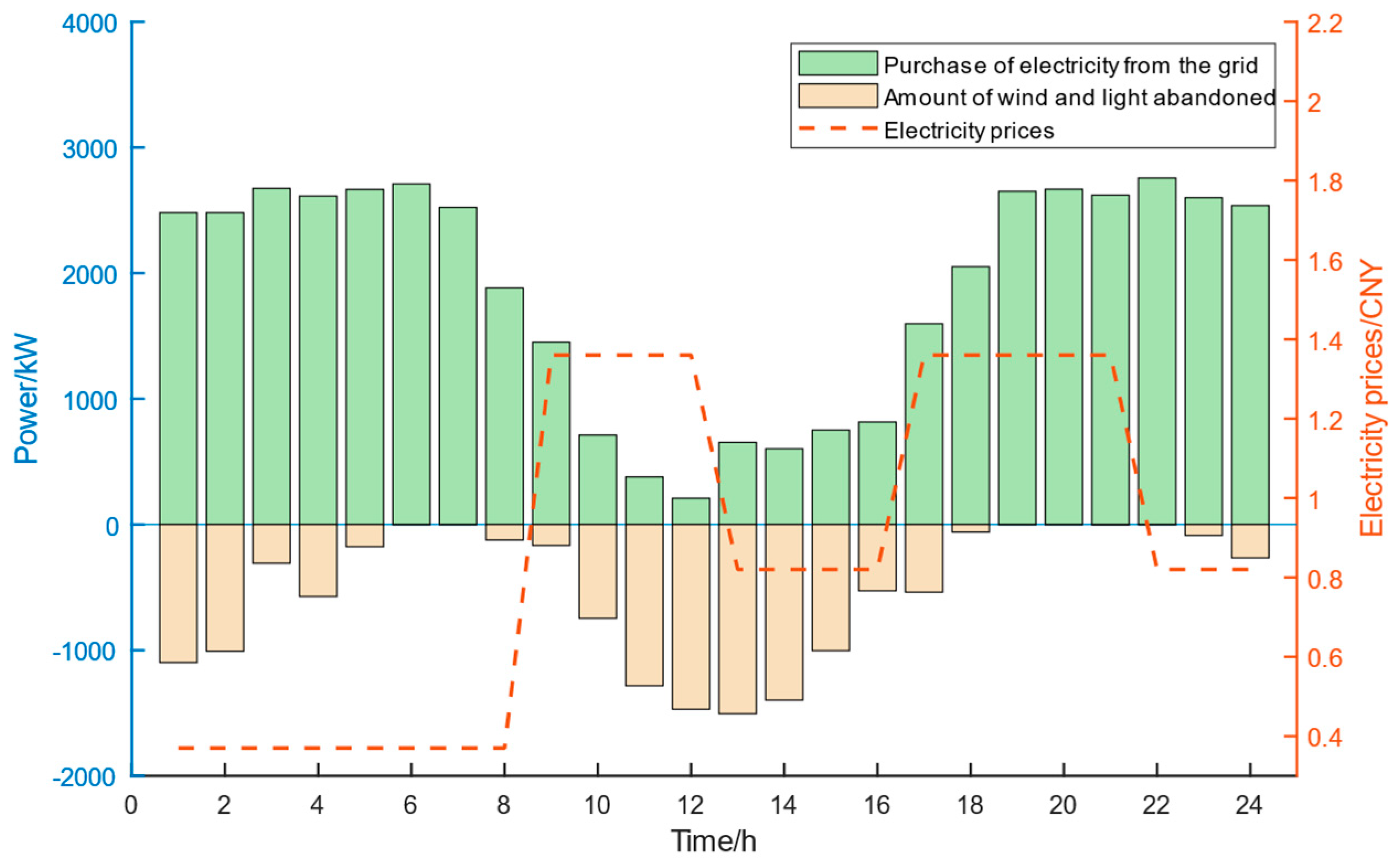
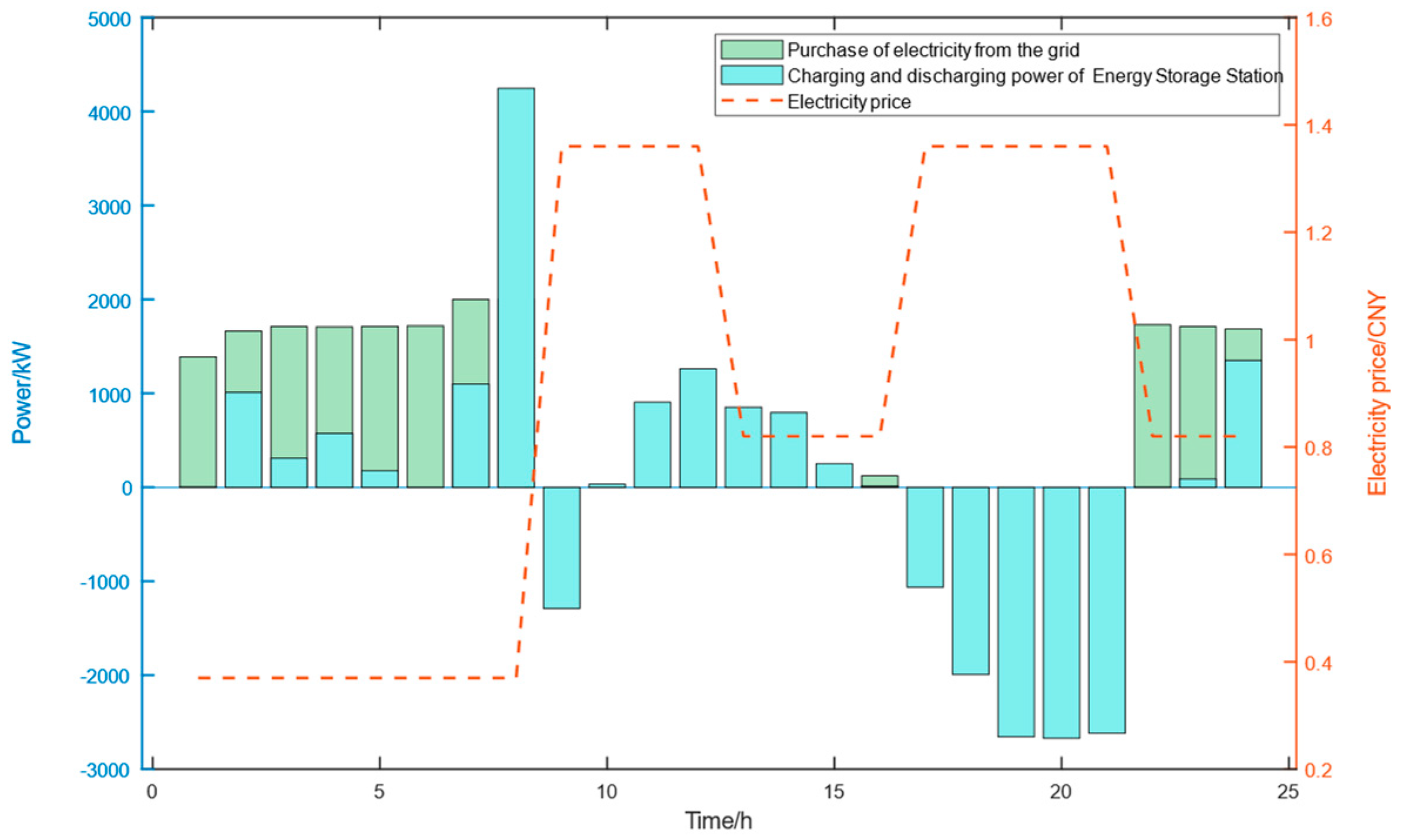

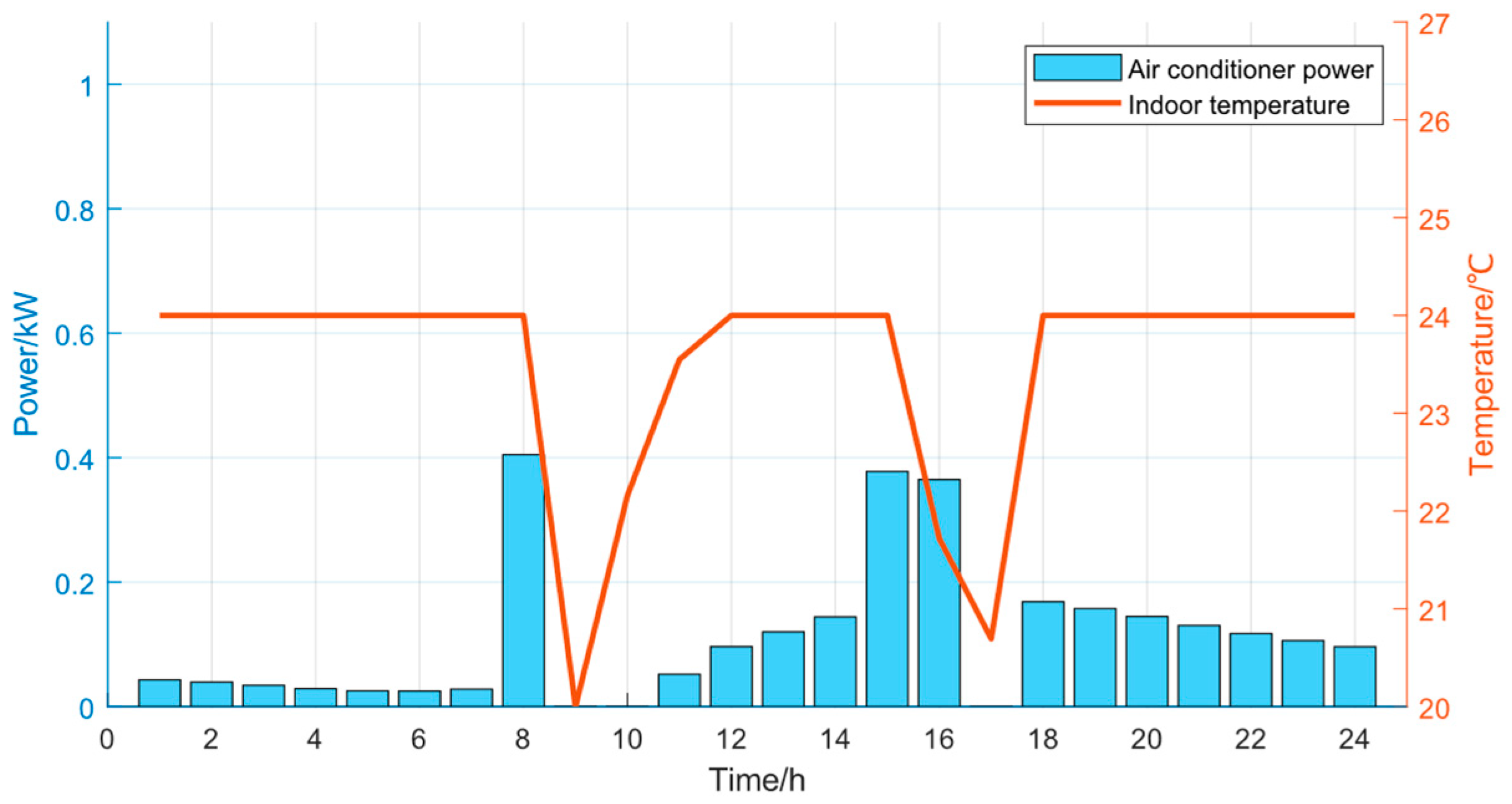
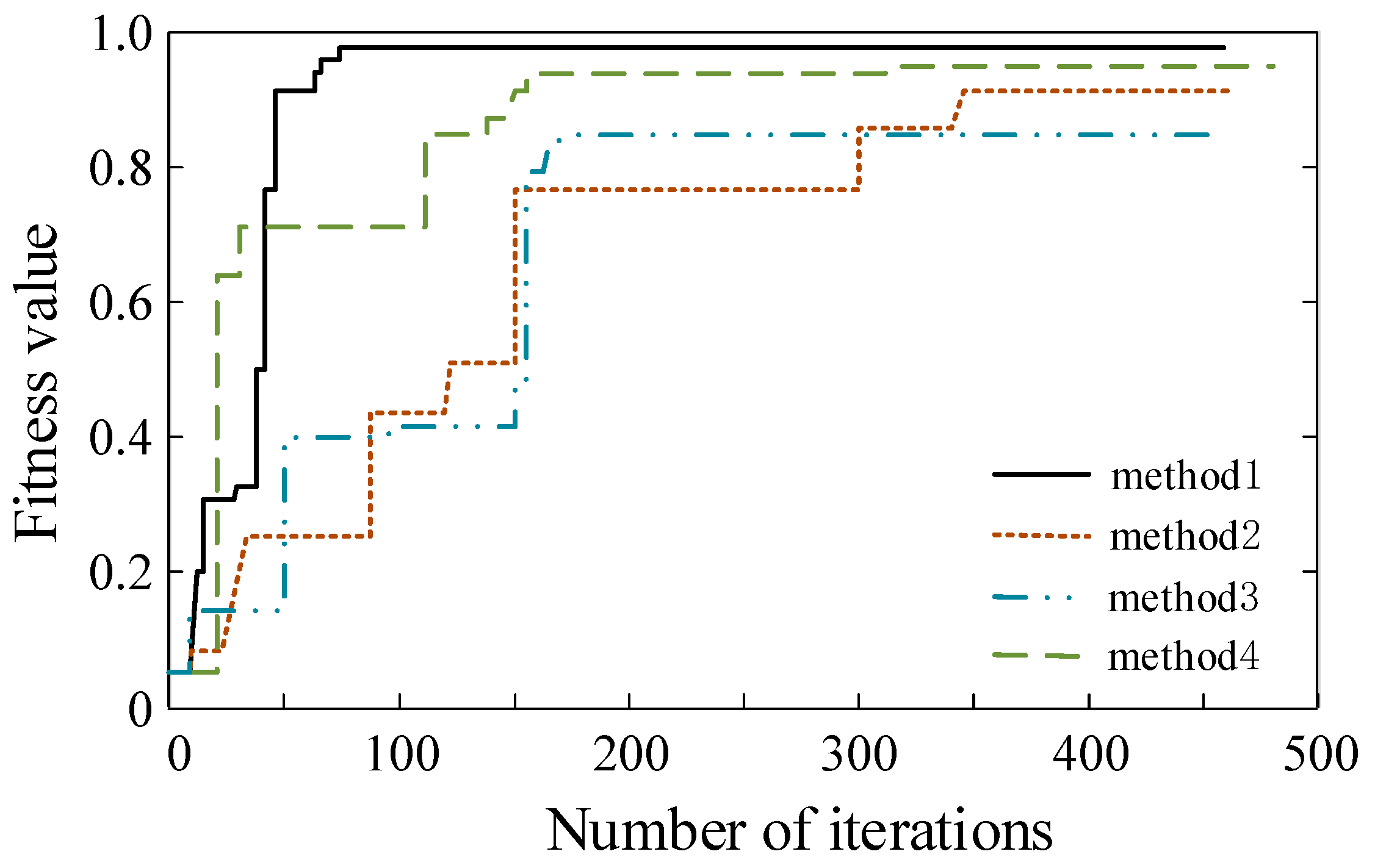
| Scenario | Load Annual Operating Costs | Annual Net Income from Energy Storage Stations | RE Consumption Rate |
|---|---|---|---|
| 1 | 12,996,483 | — | 86.7% |
| 2 | 8,832,489 | 301,648 | 100% |
| 3 | 8,624,186 | 324,349 | 100% |
Disclaimer/Publisher’s Note: The statements, opinions and data contained in all publications are solely those of the individual author(s) and contributor(s) and not of MDPI and/or the editor(s). MDPI and/or the editor(s) disclaim responsibility for any injury to people or property resulting from any ideas, methods, instructions or products referred to in the content. |
© 2025 by the authors. Licensee MDPI, Basel, Switzerland. This article is an open access article distributed under the terms and conditions of the Creative Commons Attribution (CC BY) license (https://creativecommons.org/licenses/by/4.0/).
Share and Cite
Wang, K.; Wang, Y.; Gao, J.; Liang, Y.; Ma, Z.; Liu, H.; Li, Z. Multi-Objective Optimization of Energy Storage Station Configuration in Power Grids Considering the Flexibility of Thermal Load Control. Energies 2025, 18, 2527. https://doi.org/10.3390/en18102527
Wang K, Wang Y, Gao J, Liang Y, Ma Z, Liu H, Li Z. Multi-Objective Optimization of Energy Storage Station Configuration in Power Grids Considering the Flexibility of Thermal Load Control. Energies. 2025; 18(10):2527. https://doi.org/10.3390/en18102527
Chicago/Turabian StyleWang, Kaikai, Yao Wang, Jin Gao, Yan Liang, Zhenfei Ma, Hanyue Liu, and Zening Li. 2025. "Multi-Objective Optimization of Energy Storage Station Configuration in Power Grids Considering the Flexibility of Thermal Load Control" Energies 18, no. 10: 2527. https://doi.org/10.3390/en18102527
APA StyleWang, K., Wang, Y., Gao, J., Liang, Y., Ma, Z., Liu, H., & Li, Z. (2025). Multi-Objective Optimization of Energy Storage Station Configuration in Power Grids Considering the Flexibility of Thermal Load Control. Energies, 18(10), 2527. https://doi.org/10.3390/en18102527







